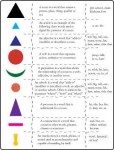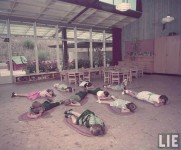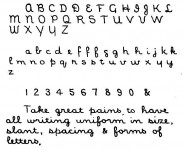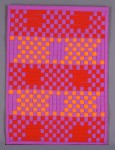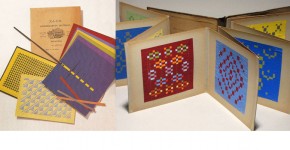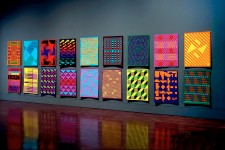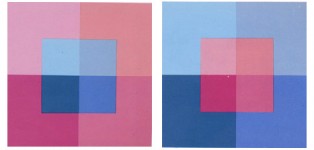When Anna Craycroft was invited to create an exhibition for the Blanton, there was an administrative debate underway about the functionality of one of the museums galleries. One room had been assigned the role of a ‘lounge’ housing a modest library of books, interactive computers and comfortable furniture. Craycroft took the controversy over the future of the gallery as the starting point for the exhibition redesigning this room and expanding its pedagogic, archivist and social role into the two rooms adjacent to it.
Subject of Learning / Object of Study brought a playful engagement with pedagogical language to these three rooms. A colorful mural of chalkboards flanked the walls of one gallery. A curated library of books filled the shelves of another. Handwritten wall didactics explained the content of the show through slogans and diagrams. The exhibition underscored how the museum itself can be a tool for teaching: replete with visual aids, archives and lesson plans.
The largest of the three rooms, the "classroom" contained a wall sculpture that measures eight foot in height and traversed the length of the walls. The piece was comprised of eighteen colorful geometric panels that were designed to slide in front and behind one another. Modeled after the Montessori School grammar symbol chart, the sculpture adapted these abstract forms into a functioning collection of chalkboards. Across from this piece hangs a grid of eighteen felt rugs. These rugs mimiced the paper weaving exercises created for kindergarten instruction by nineteenth century pedagogue Friedrich Froebel. Their designs were based on the color theory excersizes of Bauhaus teachers Johannes Itten, Paul Klee, Wassily Kandinsky and Joseph Albers. The rugs were intended for use and could be taken down from the wall to serve as individual seating mats. Both the chalkboards and rugs were designed for use during the public programs that took place in the exhibition. Classes, lectures and workshops ran in these galleries from March through June.
The circular gallery served as the reference library for the exhibition, housing a collection of books on education, textbooks dating back to the seventeenth century and toys inventented by Montessori and Froebel. All of these were made available for perusal by the visitor. Circumscribing the walls of the room was a banner of text declaring the educational axiom of tactile learning. The font for this banner was derived from Melvil Dewey’s “library hand”: the formalized script used by librarians to write catalog entries before the ubiquity of typewriters. This same notation was used in a 5-part, serialized data processing and visualization program that appeared on the computers in the library. The program, Robot Pedagogue generated new educational theories by analyzing and recombining the contents of the library books on the shelves above the computers. Using statistically probable word sequences, the program rated their pedagogical quality and stored them in a browsable archive. Visitors were invited to watch this changing display and peruse the archived texts while seated on one of the eighteen modular curved benches. Designed to fit the circular architecture of the library, these benches could also be used in the adjacent gallery for seating during public programming.
Spanning the full height of the smallest room was a didactic mural that also uses the library hand font. This piece was a diagrammatic explication of the exhibition serving as both prologue and epilogue to the exhibition. This diagram illustrated the various components of the exhibition: the three rooms are represented by the shapes at the top, beneath them is a series of color charts which refer back to the color theory used for the rugs and the chalkboards. The white grid applies these same colors to map out the calendar of classes and workshops that were scheduled to take place in the exhibition. At the bottom of the diagram the circles, parentheses and rainbow of colors were reconfigured to depict a the quintessential image for an artwork: a landscape at sunset.

